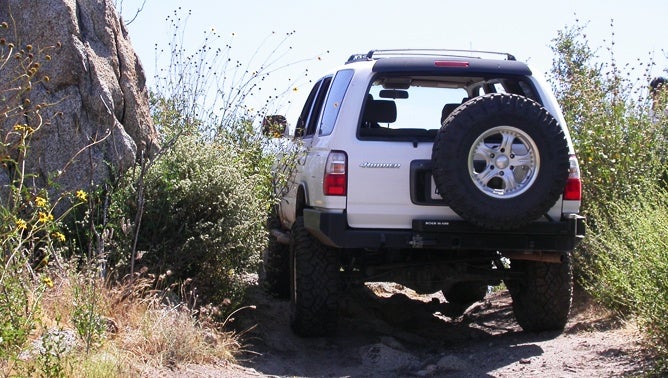
Where do you put the spare tire on your off-road rig? Four-wheeling tires are usually bigger than stock, don’t fit in the stock location, and even when your fifth 33-inch maximum-terrain knobby does tuck away in the stock spot, it’s not very accessible when you need it on-trail (especially when your truck is in a crooked-by-stuck position). Additionally, tires mounted beneath the bed/tailgate/bumper are uniquely exposed to the pointy things that lurk off-road. All of this has to leave you wondering just what are your options for the best off road spare tire carrier?
We boiled down the four basic spare tire mounting locations: the bumper (usually in the rear), on the flat upper surfaces (typically the roof, unless your name is Nigel and you’re on safari), in the back at the rear of the cabin (particularly on wagon-based rigs like the 4Runner or WJ), or in the bed of your pickup.
Spare Tire Mounting Issues: Size and Weight?
Size is the principal cause of spare tire mounting relocation. Some stuff just won’t fit. It’s not a square-peg versus round-hole thing – you can always deflate a tire to squish it into a smallish nook – but if you start running 40-inch Grapplers on your Jeepomatic, the factory tailgate mount ain’t going to cut it. That spare will be wider, taller and heavier than what was there, and you’re doing yourself a disservice by trying to force fitment.
Speaking of heavy, the weight of the spare is a direct function of size, and of any factor, may be the most consequential for where a spare can go. For starters, big tires are harder to pick up and put down – how many guys in the industry have back injuries from slinging tires? Try hoisting a 37-inch Kevlar M/T R on to the roof of your Cherokee and you’ll see (and you can’t just throw a tire down – they bounce, remember?). We’ve seen roof racks that have swing-arms built into them to lower big-by-wide rubber from the roof, but that’s even more weight. A spare mount that allows you to roll or leverage a tire into place – without outright lifting, and preferably without help – becomes more preferable as tire size increases, which means bed/tailgate mounts are nice, with bumper mounts coming in third.
Spare tire weight is always an issue with compliant off-road suspensions and taller than average rigs. If you’ve ever driven with a load on top of a truck’s roof (your author once hauled a 200lb palm stump to the desert on the roof of his 4Runner, and it got weird) you know that it doesn’t take much weight to make a truck handle like a drunken freshman. A big tire on the roof will do just that, and drastically affect gas mileage too.
Table of contents
Spare on the Bumper
Front or rear (usually rear). Convenient. Showy. The mount is more likely to be a bolt-on. Any steel or tube bumper (or metal of any sort) can have a spare mount welded to it should function warrant. Lots of fabricators build them, for countless applications, and a decent fabricator could render your bumper a spare mount in a few hours. A big steel bumper isn’t the worst place to learn to weld, either, so long as you’re competent enough that it won’t fall off.
Weak links: in this spare tire mounting location, the spare’s exposed and theftable. If it’s a swing-out mount, that big hinge makes it pricey (and any hinge that’s strong enough to hack it won’t be cheap). Outward visibility can be seriously compromised. Mount it too low and you might strike oil during your next R-rated departure angle.
There’s also the derivative of the rear bumper application, the Wrangler-style rear door fitment. Everything from Rav4s to Vehicrosses – or your uncle’s Caddy – had a spare back there, some mounted to a fender, others to the door. Accessible and inexpensive to upgrade. Drawbacks: if the door or fender aren’t reinforced for the weight of a tire, don’t try it – that’s a big donut.
Roof Top Spare Tire Mounts
Gets the spare out of the way. Cheap and easy, especially if you already have a rack up there. You can mount it with a through-bolt or some straps. Again, looks safari-cool (if that’s your thing). Keeping the spare out of the truck keeps that new-tire smell out of the truck, too. You also avoid losing interior room – it happens.
Downsides to the roof/hood spare tire mounting location? Very not easy if you’ve got a tent on that rack. Exposure to all sorts of cosmic rays. If you use straps, they’ll fade and fatigue faster than you can bend a tie-rod on John Bull. You’ll need to put it up there and take it down, so you’d better hit the gym. Also, tires bounce – perhaps you should unload it into that bush over there. Speaking of the safari-tough guy hood spot, that’ll cost you a lot of road vision. Also #2, modern sheetmetal isn’t like it used to be – your hood (or roof) might not be safari-grade.
In the Back of Your Wagon?
Our favorite spare tire mountain spot, so long as we’re not trying to haul plywood. Protected from the elements. Even cheaper than the roof, so long as there’s a place to secure it. Relatively low lift and drop, with lots of angles for hands-on.
However, a tire in the back-back takes up a lot of space. Room is semi-limited – not too many Wagoneers have more than 35 inches clearance (unless you plan to lay the tire down, eliminating even more interior space). Blocks your rearward view if you mount it in the wrong place. Smells like tire spirit.
Truck Bed Spare Tire Mount
A truck bed spare tire mount is probably the easiest way to carry an extra tire. Plenty of simple and/or inexpensive mounts to be had – some so simple as drilling a hole in the bed (ouch). The bed leaves a lot of options for location, so you can manage outward visibility, weight distribution, and to limit encroachment on function (or you can mount the spare poseur-style, right in the center of the bed).
Then again, using a truck bed spare tire mount – without taking time to plan it – can turn your pickup into a two-seater. If you’ve managed to avoid poking your flat-biller long-travel hoops through the bed, you can still haul some hay for the man, so you’ll need to put that spare in a fender pocket or use a raised mount that spans the wheel-well humps.
Other Things to Consider
Because off-road builders are desperately creative (hold my beer!), you’re going to encounter innovative stashes for the backup tire and wheel, but there are only so many places, and the pros and cons for each are universal.
Have you considered what that spare will do when you relocate it? Size and weight matter (both for tire-lifting and vehicle dynamics). What about the ease of loading and unloading? Potential hazards like visibility and dynamic separation? Compromises to space and utility (not to mention civility)? What about potential wear to the spare?
Poseur Value?
There’s also the “other” things folks worry about: poseur things. Is my spare on display? Will folks dig it? Is it the right look for my truck? How many bales of hay will it cost? Do I need to weld anything? A mail-order billet-aluminum hydraulic bed-pocket remote sling mount will look great, but you can work on your abs while lifting the spare to the roof rack for free.
Spare Requirements + Function = Relative.
There are also questions about vehicle use. Will your spare be accessible when you need it? Where will you keep the tire tools? Are you trailering your rig to the trailhead? Do you need two spares if you’re never more than ten miles from a gas station, if you carry tire-repair tools, if you’re using the vehicle in a low-speed environment (like crawling versus desert racing)?
You’ll note a theme developing here: one spare-tire factor leads to another. Size and weight of the spare affect your ability to get to it and remove it. Factory-height bumper and tailgate mounts might ease access, but they’re low (trail clearance). The higher the spare is located, the harder it is to reach and reload and affects truck dynamics, but will be high and wide when it’s time to dodge the next grabby trailside boulder.
- As mentioned previously, those big round rubber things bounce, and when one bounces the wrong way, it can take out a fender, window glass, fiberglass or Uncle Cass, so you want to have a technique or a tool when you must unload that backup tire.
- As for those flying BFGs, you’ll need to be able to guarantee a secure mounting point for any tire you stash, because that thing can’t come lose in an accident (whether inside the truck or out).
- Any spare mount needs to be secured to the vehicle too – hanging a 70-pound tire with one bolt through the sheetmetal bed ain’t going to cut it when the trail turns tough.
- … And you can’t be placing a tire in the sight lines you depend on for vehicle control: generally, the best spot is out of sight altogether, and second-best is directly behind the driver. Try the alternatives and you’ll understand. In fact, that’s a great idea – you can test many mounting locations sitting still, without the mount in place.
- Any spare that’s exposed outside the truck for any length of time should have a cover and some sort of lock (to prevent the thievery of tire or its molecular bonds).
Don’t all vehicles already have a spare tire holder?
Yeah, they do. Those spare tires are either emergency donuts or maybe they’re the same size that came on your vehicle, but if you’re an off-roader you’ve likely increased your tire size. Have you ever tried to shove a 37″ tire into a tire well designed for a 265 series tire? You’d have a better chance fitting a square peg into a round hole. These spare tire carrier options allow for you to mount those oversize tires, and in some instances the ability to mount multiple spares.
Can the rear door of my Jeep really hold the large spare tire that I need?
If your door mounted oversized spare tire mount is from a reputable manufacture in the off-road industry, you’re probably ok. Companies put plenty of thought and testing into the products that they make and use strong hardware and ensure that the mount is properly reinforced to hold the load of your big spare.
Is any one of these mounts better than the other?
The biggest determining factor you need to take into consideration for your spare tire mount, is which application is best suited for your vehicle. Bedside mounts won’t work in a Jeep, and some roof rack applications won’t work for some pick-up trucks. Do your research for the style that you like and what would work best for your vehicle.
Additional Resources
Recent Updates
4/25/2022: Updated product links, added FAQ, added additional resources
We are committed to finding, researching, and recommending the best products. We earn commissions from purchases you make using the retail links in our product reviews. Learn more about how this works.
Recent Updates
4/30/2021: Updated product links and descriptions
12/21/2022: Updated product links and Images
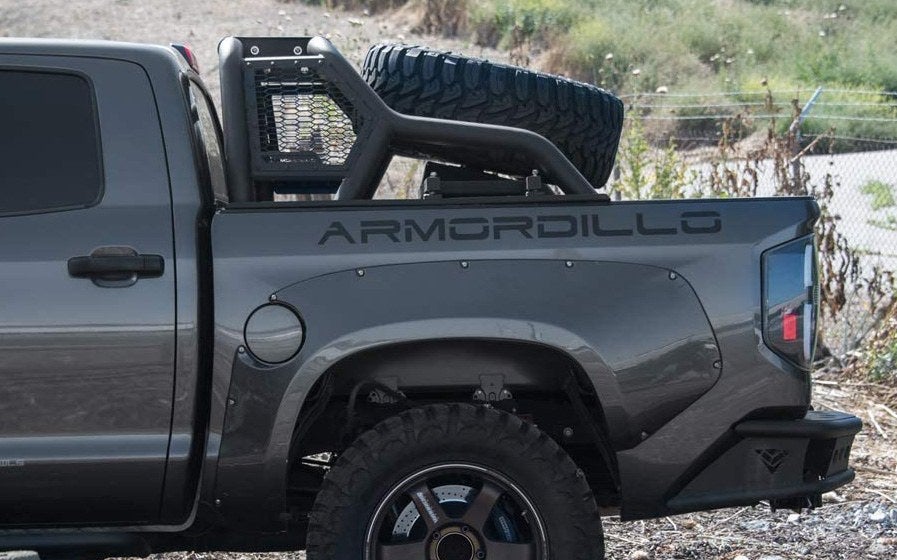
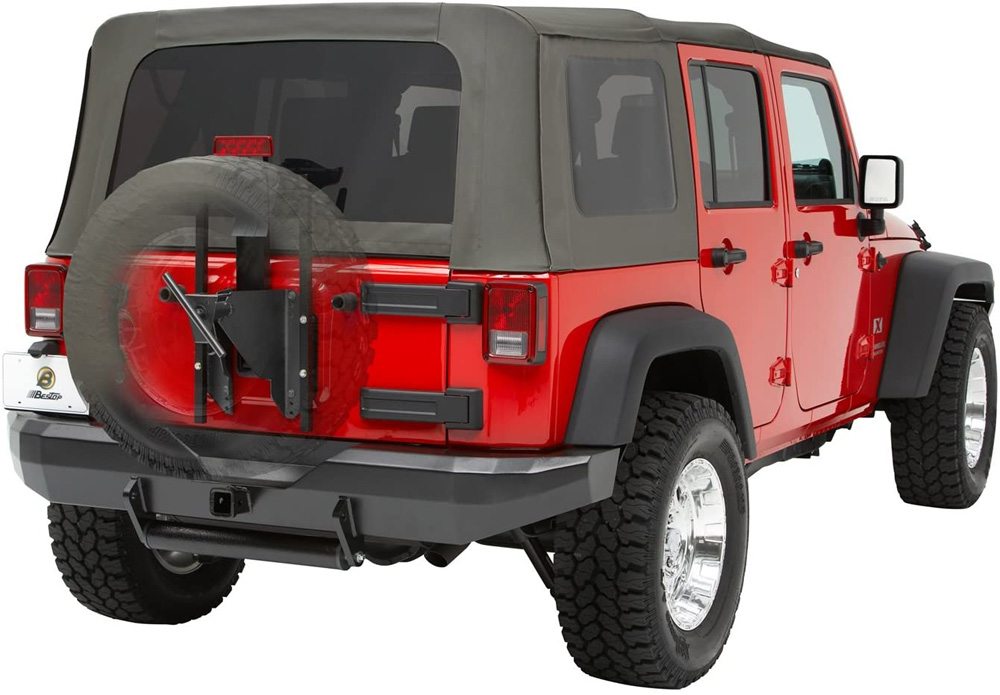
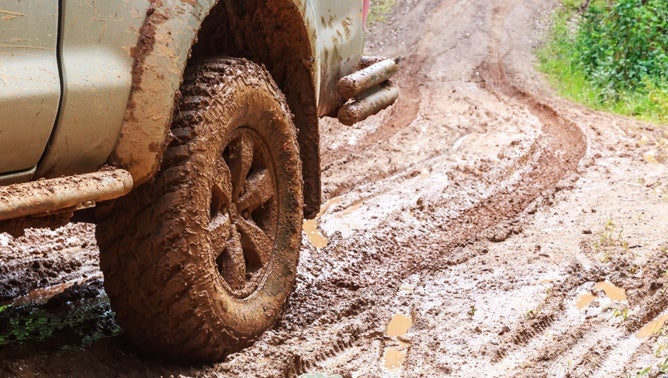
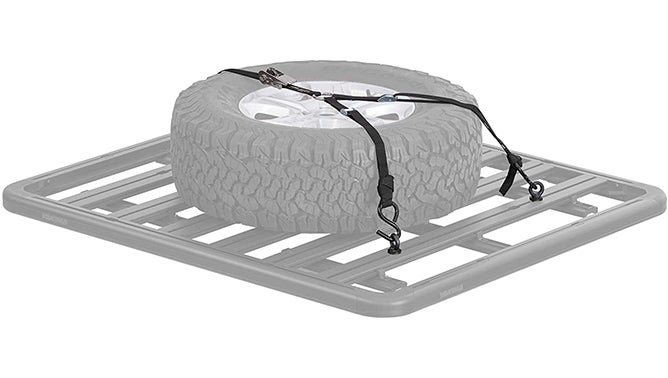
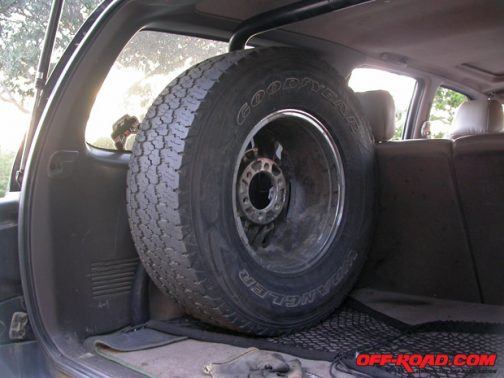
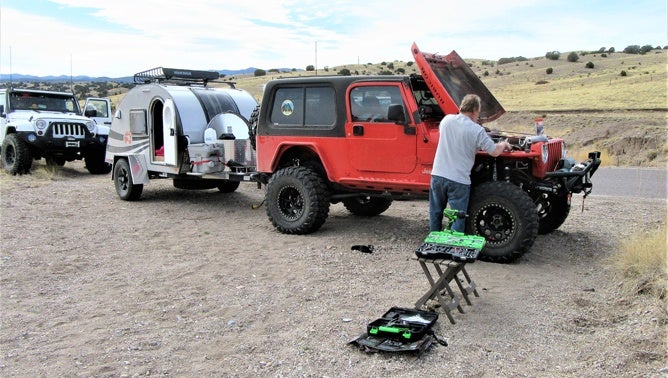
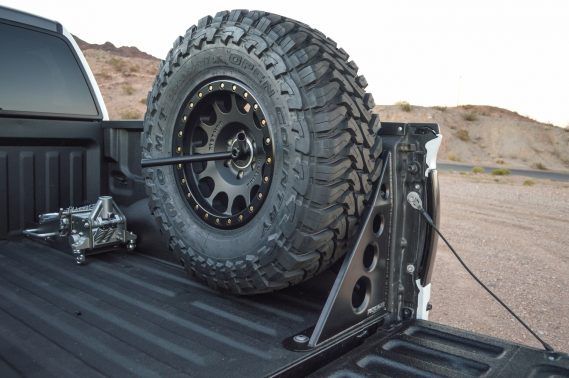
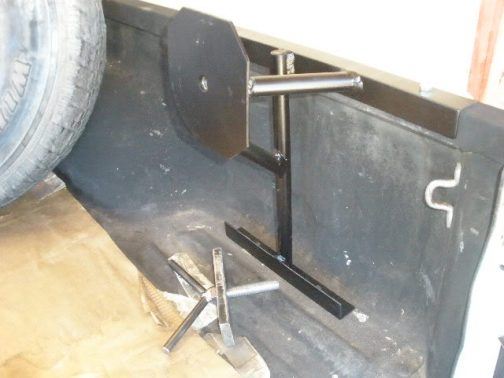
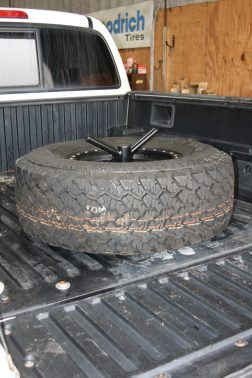
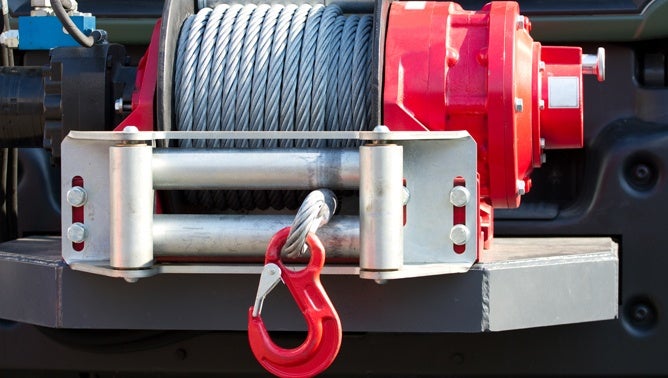
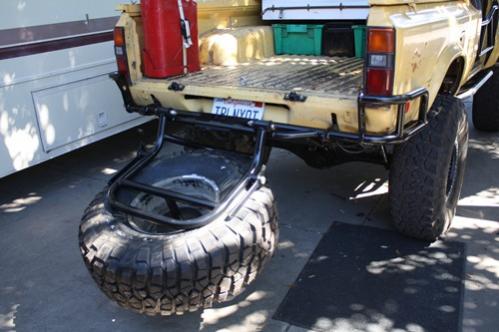
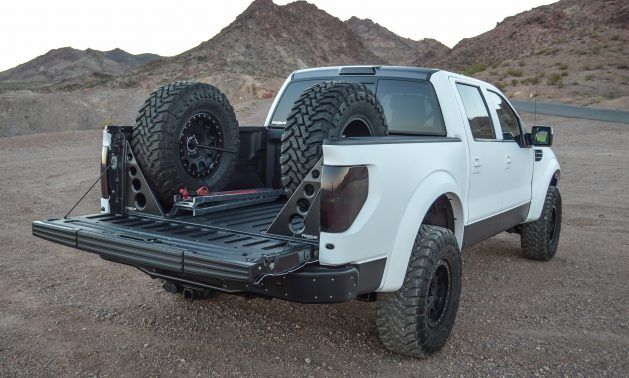
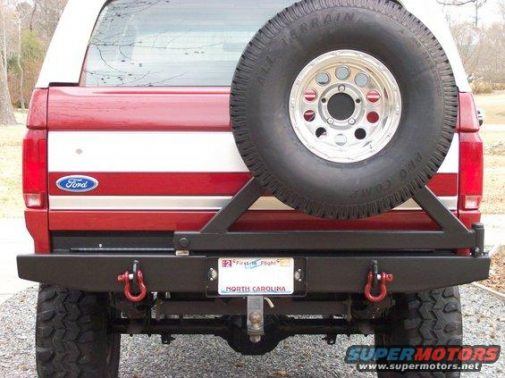
 Your Privacy Choices
Your Privacy Choices